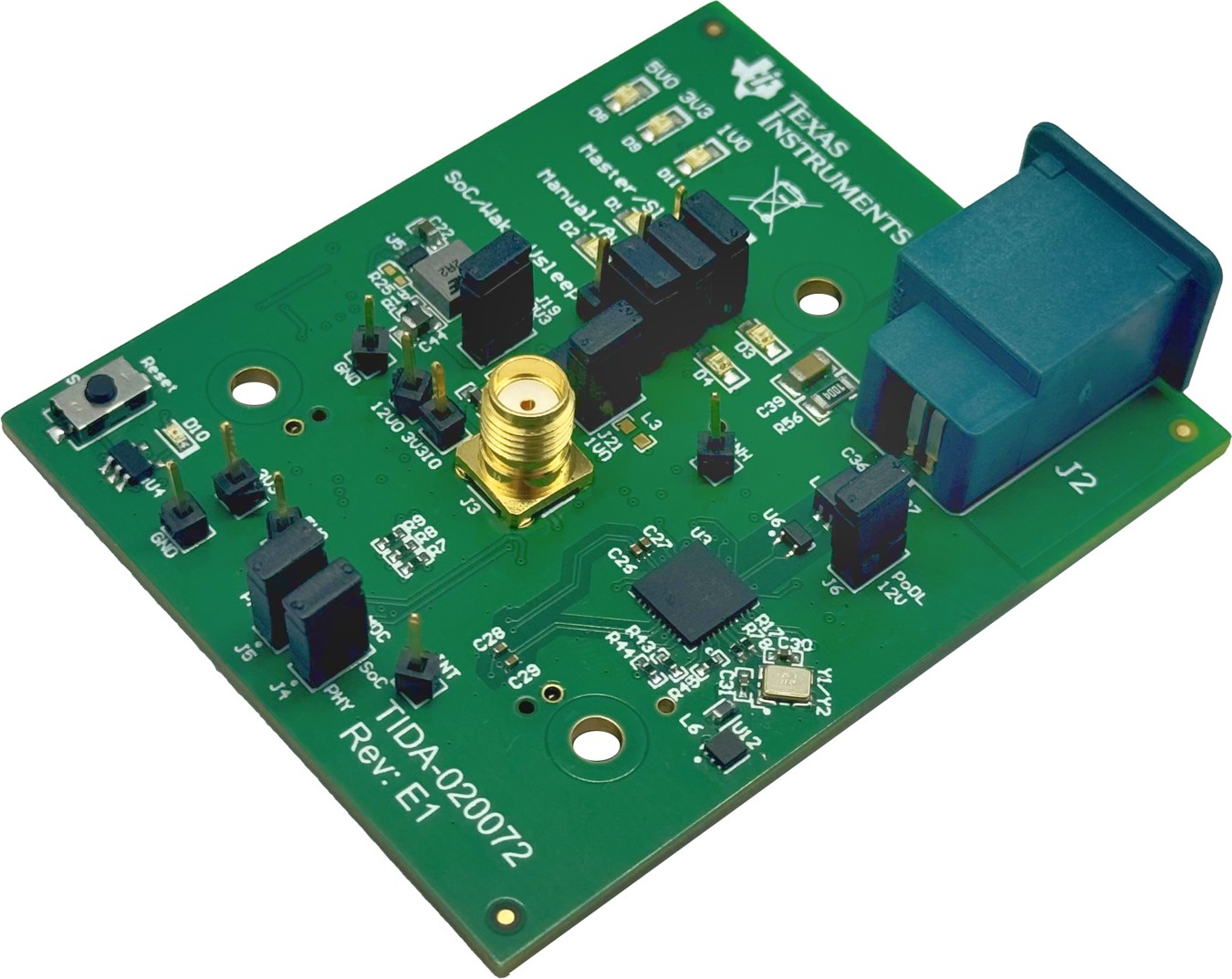TIDUF83 September 2024
1.1 Key System Specifications
The key features of the TIDA-020072 reference design include:
- 100Base-T1 automotive Ethernet
- Default PHY address is configured to 15
- 12V can be coupled on the automotive Ethernet cable
- DP83TC817S-Q1 1.0V supplied by the internal LDO of the PHY
- Option to populate TI's BAW oscillator
- Footprint compatible to TI's 1000Base-T1 SPE PHYs
- Board ID EEPROM for board identification
 Figure 1-1 TIDA-020072 Board
Image
Figure 1-1 TIDA-020072 Board
Image